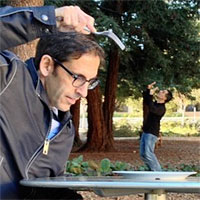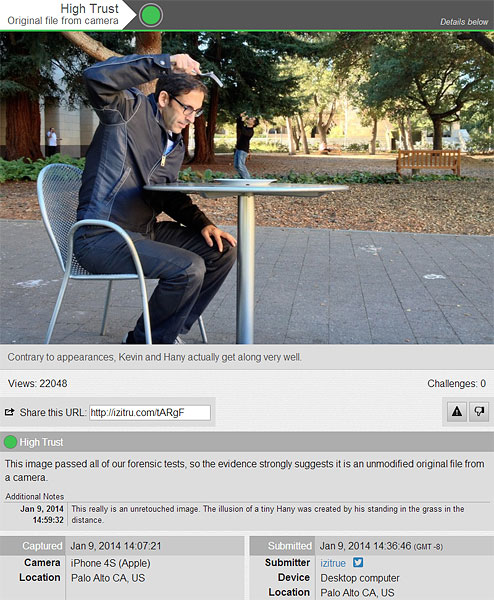Is it a hoax, or is it true? Image sharing service Izitru passes judgement on your photos
posted Wednesday, May 7, 2014 at 11:21 AM EDT

As photo-editing apps like Adobe Photoshop and its ilk have gotten more powerful over the years, so to has the humble hoax photo. We've come a long way from the days of obvious hoaxes, like the legendary Helicopter Shark, or George W. Bush with his upside-down kids' book. These days, it can be a little harder to tell straight off the bat if what you're looking at is what it claims to be. And it's not just social media that struggles with this problem: even the mainstream press seems to be taken in by retouched imagery on an all-too-frequent basis.
But how do you tell truth from fiction? That's where a new image hosting service from Fourandsix Technologies comes in. We've mentioned Fourandsix quite a few times, as company co-founders Hany Farid and Kevin Connor have often weighed in on retouching scandals, vindicating some images and confirming the falsehood of others. The duo have long offered software that aims to sort the wheat from the chaff, using clever algorithms to determine whether or not an image has been edited. Now, they've taken the idea to the next level.

The cleverly-named Izitru -- say it out loud, if you don't get the joke -- is a free image hosting service like no other. Where most such sites simply serve content, Izitru analyzes it in a variety of ways, and then passes judgement on whether the image is real. Alongside the image itself, you're shown a trust rating: either High (the image wasn't edited after it was captured by the camera or phone), Medium Trust (no obvious sign of tampering, but at least one forensic test was questionable), Potential Modification (the file has, at the very least, been resaved after capture), No Trust (clear manipulation), or Undetermined (the tests were inconclusive).
Providing some reassurance that your image won't be flagged a fake by an algorithm gone awry, Izitru provides a "Thumbs Down" button that allows you to flag a particular shot as questionable. No image will be assigned a "No Trust" rating without first receiving a significant number of challenges, followed by a manual investigation by Fourandsix. Until the investigation has happened, the worst flag you'll receive is a "Potential Modification" warning on an image.

The automatic algorithms analyze images on six criteria. As well as the same JPEG signature test used by the company's FourMatch product, Izitru also applies JPEG structure analysis, double JPEG detection, JPEG coefficient analysis, sensor pattern analysis and JPEG ghost detection before reaching its verdict. While there's no specific check for local manipulation, these tests should be enough to confirm that an image has in some manner been modified. Once flagged for a closer look, Izitru's staff can then use more detailed tools such as clone detection, analysis of lighting and more to render a final judgement.
So the next time you see a shark in a shopping mall, a politician in a compromising situation, or an alien autopsy, you'll know what to think. At least, so long as the trickery happened after the shutter was tripped: pre-capture shenanigans will still have the hoaxbusters on standby.